205 vs 225 Tire
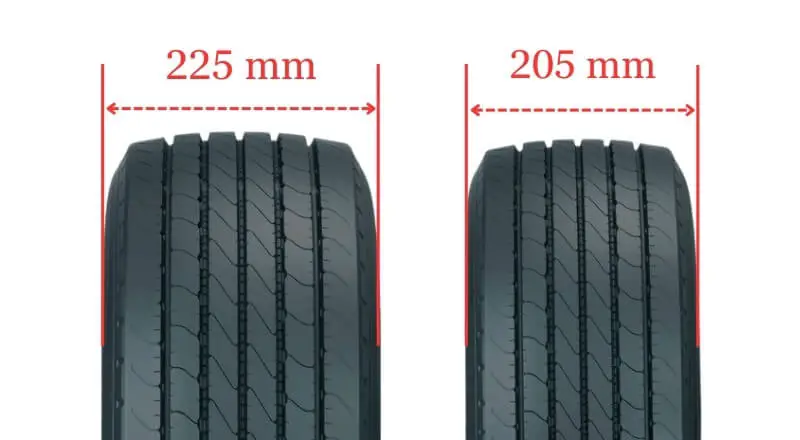
The first number in a tire size refers to the width of the tread in millimeters. The main difference between a 205 tire and a 225 tire is the tread width. This means a 225 tire has a tread that is 20 mm wider than a 205 tire.
205 vs 225 Table
If you want to understand the differences between two tire sizes, let’s compare 225 and 205 tires.
| Tire Size 205 | Tire Size 225 |
|---|---|
| Narrower 8.07 inch (205mm) Tread Width | Wider 8.86 inch (225mm) Tread Width |
| Slightly Better Fuel Efficiency | Slightly Reduced Fuel Efficiency |
| Faster Steering Response | Slower Steering Response |
| Less Ground Clearance | More Ground Clearance |
| Quieter Ride | Noisier Ride |
| Less Visual Impact | More Visually Aggressive |
| More Winter Traction | Less Winter Traction |
| Longer Tread life | Shorter Tread life |
| Smoother Highway Driving | Better Off-Road Traction |
Ground Clearance
A 225 tire provides slightly more ground clearance than a 205 tire. The larger overall diameter and width of a 225 tire means there is more space between the bottom of the tire and the ground.
This extra clearance can be beneficial for off-road driving or when driving over obstacles, reducing the risk of scraping or damage. However, the difference in ground clearance between a 205 and 225 tire is minor, usually less than an inch.
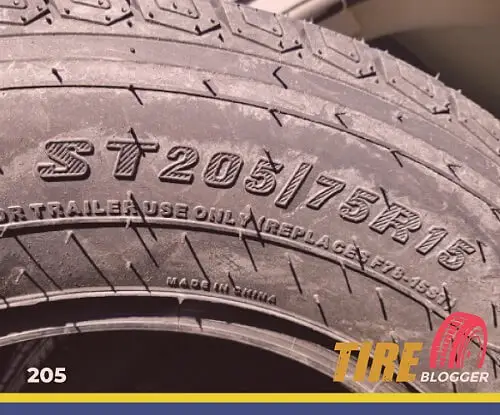
Gas Mileage
The wider 225 tire has a larger contact patch with the road surface, slightly increasing rolling resistance. This can lead to marginally reduced fuel efficiency compared to a 205 tire.
However, modern tire construction minimizes this difference, so the impact on gas mileage between a 205 and 225 tire is small. Drivers prioritizing fuel economy may still prefer the 205.
Ride Comfort
Overall, ride comfort is similar between 205 and 225 tires. The 225 tire’s greater width provides more air cushioning between the wheel and road irregularities.
But its shorter sidewall height counters this by transmitting more road feel into the cabin. On balance, both sizes deliver comparable ride quality, with only subtle differences.
Aesthetic Looks
Aesthetically, the slightly wider 225 tire provides a more aggressive, sporty appearance, filling out the wheel wells more. However, the visual difference between a 205 and 225 tire is relatively minor.
Only if the two sizes are viewed side by side most observers will notice a significant aesthetic distinction.
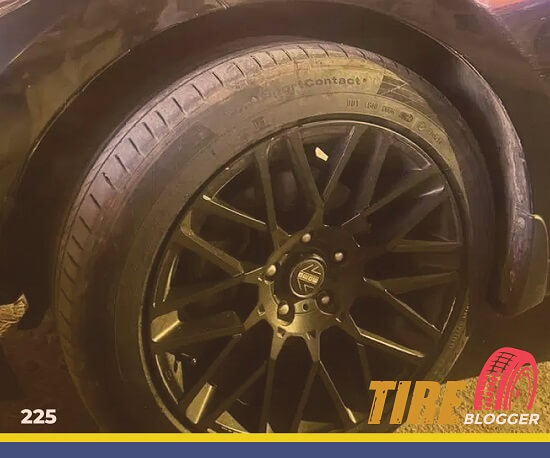
Handling & Stability
Regarding handling, there is very little difference in real-world performance between a 205 and 225 tire. The 205 narrower tread does provide marginally quicker steering response and rotation.
But modern suspension and steering systems minimize the impact of a 20 mm width increase. Both sizes deliver responsive, stable handling for normal driving.
Noise & Vibration
Tire noise and vibrations are similar between 205 and 225 tires. The 225 transmits slightly more road noise due to its additional tread contact area.
But its greater air volume helps dampen vibrations from road imperfections. These minor differences effectively cancel each other out, resulting in comparable noise and vibration characteristics.
Durability & Wear
Both 205 and 225 tires exhibit similar durability and treadwear with proper maintenance. The 225 greater tread width allows it to dissipate heat and impacts slightly better, maximizing tire life.
But the 205 smaller size puts less strain on the tire structure. Overall, wear rates are comparable between the two sizes with only subtle variances.

Adverse Condition
Performance in snow, ice, mud, and other adverse conditions is similar between 205 and 225 tires. The 225 wider tread provides a touch more grip and traction from the increased surface contact.
But the 205 smaller contact patch allows it to penetrate snow and mud more efficiently. These modest advantages counterbalance each other, resulting in comparable capability.
Difference Between 205 and 225 Tires
The main difference between 205 and 225 tires is the section width, with 225 tires being 20mm wider than 205 tires. This difference in width affects the tire’s performance, handling, and overall appearance.
Can I Use 205 Tires Instead of 225?
Yes, it is possible to use 205 tires instead of 225 tires. The ideal rim width ranges for both tire sizes overlap, making the switch feasible. However, consider the aspect ratio and rim diameter for proper fitment.
If these parameters vary, limit the overall diameter difference to 3% or less to preserve speedometer precision and proper vehicle function.
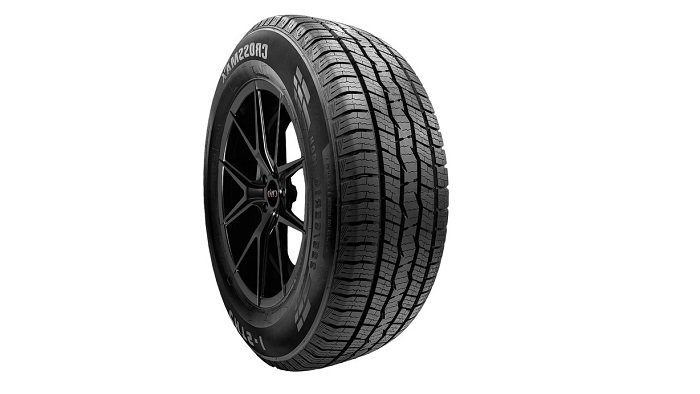
Can I Use 225 Tires Instead of 205?
Yes, you can use 225 tires instead of 205 tires. The compatible rim width ranges for both sizes have sufficient overlap. The replacement tires’ aspect ratio and rim diameter should be compatible with your current configuration.
If they don’t align perfectly, aim to keep the overall diameter difference within 3% to avoid affecting speedometer accuracy and vehicle efficiency.
Can I Put 205 Tires on 225 Rims?
Yes, you can put 205 tires on rims designed for 225 tires. The ideal rim width range for 225 tires (6.5-8.5 inches) overlaps with the range for 205 tires (6.0-7.5 inches), ensuring proper fitment.
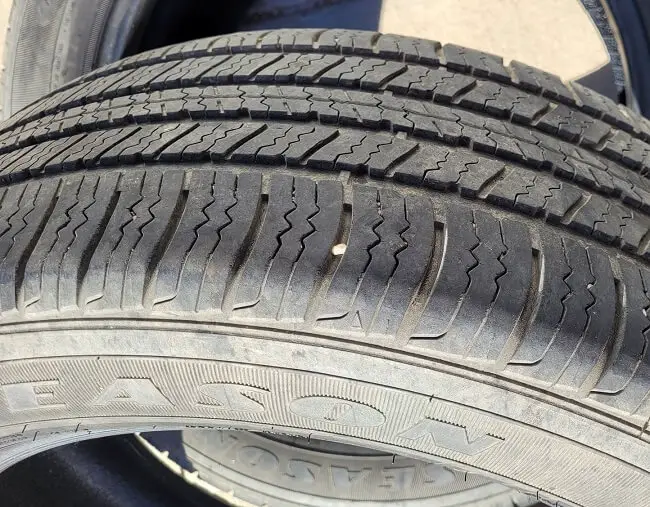
Can I Put 225 Tires on 205 Rims?
Yes, you can put 225 tires on rims designed for 205 tires. The ideal rim width range for 205 tires (6.0-7.5 inches) overlaps with the range for 225 tires (6.5-8.0 inches), allowing for a proper fit.
Our Observation
After comparing the minor differences between 205 and 225 tire sizes, I don’t see a compelling reason for most drivers to choose one over the other.
The wider 225 provides slightly more ground clearance and a tougher look but slightly reduces fuel economy. Meanwhile, the narrower 205 steers a bit quicker and gets marginally better mileage at the expense of some clearance.
The differences are so minimal that either tire will perform well for everyday driving. I would focus more on quality and tread life rather than size when choosing new tires.

Meet Caitlin McCormack, a Tire Size Expert and Blogger Passionate About Everything Related to Tires. With Years of Experience in the Tire Industry, Caitlin Has Become an Expert in Tire Sizes and Their Impact on Vehicle Performance.
